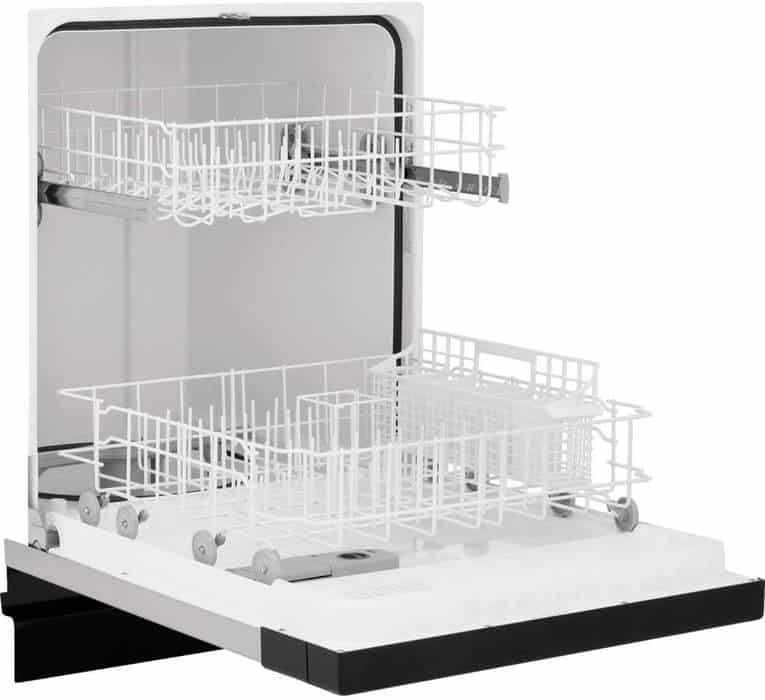Table of Contents
Dishwasher Not Draining, Is Your Dishwasher Not Draining Too?
I had this problem a few years back with my old Bosch, what began as a small build-up of water in the bottom of the tub, suddenly built up and was then a huge problem.
I prodded about in the bottom with a wooden spoon, to see if I could clear any build-up of debris but that didn’t do it.
I ended up having to get a repair guy in, he was there less than 45 minutes and charged me almost what I earned in a day. It was then I decided to learn for myself how to sort out these issues if they happen again.
So Why Was My Dishwasher Not Draining?
The dishwasher is gaining popularity in your Kitchen, but what if there is drainage is a problem? The hassle and time lost waiting for a plumber to repair your dishwasher and the cost of repairs can be a nightmare.
You can take a few steps and troubleshoot your dishwasher yourself. There may be many reasons behind the failure to drain,
But you can fix them all using your intelligence and by working smart which will also save you money. Follow the procedure to below to figure out why your dishwasher won’t drain.
Step 1 – Switch OFF Power
Turn the power off to the dishwasher from the circuit breaker before you start working on it.
Step 2 – Proper Visualization of the problem
Check the bottom area of the machine first and try to remove the accumulated water manually using cups. Then look for any debris, paper scrap, etc.
In the drain section. In some cases, this problem can be resolved by cleaning the dishwasher. If little water and no debris are found, then this may not be a major issue as the machine is designed to intentionally keep some water in order to prevent a seal.
Step 3 – The door Lock should be checked after you are done with Step 2
If the Dishwasher door is not locked properly, then you may find a problem with the draining. Try opening the door and closing it once again to check the performance, if still not draining, then you must replace the door latch.

Step 4 – Component Check
Component failure can be checked by spotting errors in the drain line, motor, drain valve, belt, pump, solenoid assembly, and air gap. If your model is old and driven by a belt, then check if the belt is not broken or misplaced from the normal position on the pulley.
Try to fix it back to the position. See if you check these components and call up an Electrician to rectify the problem as soon as possible.
Step 5 – The drain Plug that disposes of Garbage should be given a check
A dishwasher contains a drain plug (a small insert made from a plastic body) in the garbage disposal area. This plug should not be inserted and hence you should remove it immediately in case you find it inserted.
Step 6 – Drain Hose check
You will find the drain hose located between the pump and drain line. Remove this hose and check whether it is blocked or not. Removal is easy as the hose is held with clamps only and so can be easily removed.
You simply need to loosen the clamps, take out the drain hose and check for blockage. If you cannot remove it or find any other issues, then call a plumber to repair the issue.
Step 7 – The pump can be one of the main reasons for drainage problem
Check if the pump is running properly or not. Make sure you switch ON the dishwasher this time. All other above steps were done without power but this step needs to check motor functionality.
If you hear a hum-like sound, then the motor can be an issue that cannot be resolved without replacing the dishwasher or motor. Always use the motor recommended by the manufacturer only.
Step 8 – Drain Valve Check
When you use a dishwasher to clean your dishes, the drain valve receives power while in the draining cycle only.
Make sure power is present at the solenoid valve which opens up and allows the drainage of water through it. If the valve is not working properly or receiving power then it may be time to call in a professional.
Step 9 – Piston and Nut assembly Check
Many models of dishwashers have drain pumps with an integrated check valve. This Check valve has a piston and nut assembly which normally moves freely in up and down positions.
If the water is not draining you may have problems within the piston and nut assembly. You will find this assembly located at the bottom of the tub which is present beneath the cover of the pump.
You can remove this assembly by simply removing 4 screws. A tight seal is formed by this assembly and piston in-down position and if this seal is not properly fitted then this is why the dishwasher won’t drain.
Step 10 – Timer Check
Some of the older and new models come with a mechanical timer to carry out various cycles of operations. This Mechanical timer controls the functions of the dishwasher including the drain pump motor and solenoid valve.
You can easily find this timer on the front panel of the Dishwasher door. If you want to get a better understanding of the concept, then you can look for wiring and schematic diagram in order to identify and rectify the correct contacts of the mechanical timer responsible for controlling the drainage cycles.
Continuity can be tested using a basic Analog or Digital Multi-meter and in case of any discrepancy, please contact the Manufacturer.
I hope the above steps will help you resolve the drainage issue.


1 thought on “Dishwasher Not Draining”
Comments are closed.